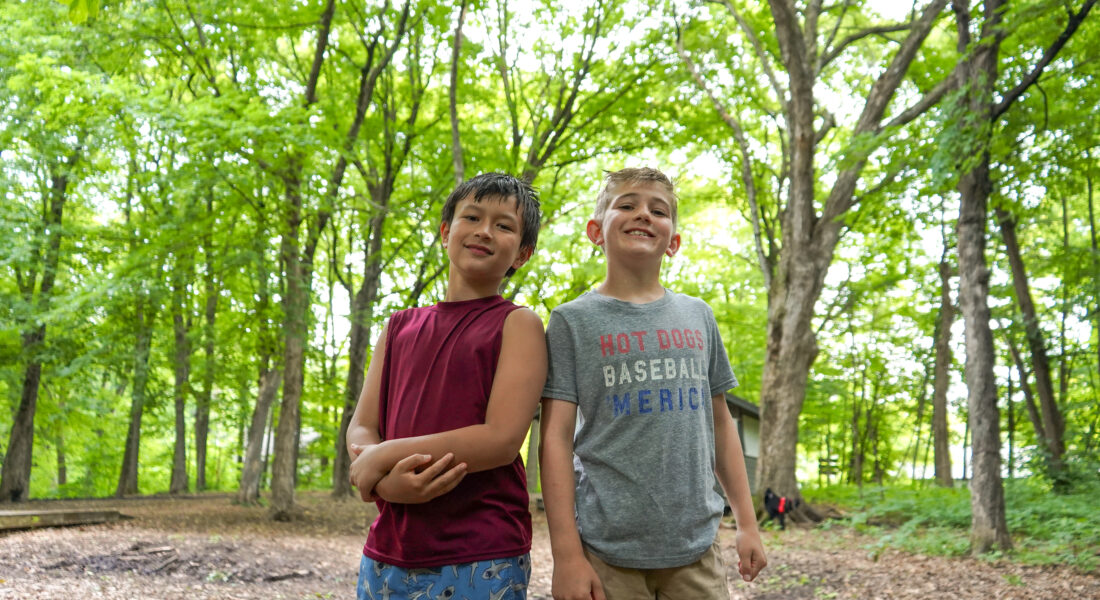 Budding Experts is our student-led, monthly interview series highlighting young people and the fun things they learn about during our programs. At Camp Fire, campers learn about outdoor activities, art, STEM, and the environment from trained specialists and instructors.
Budding Experts is our student-led, monthly interview series highlighting young people and the fun things they learn about during our programs. At Camp Fire, campers learn about outdoor activities, art, STEM, and the environment from trained specialists and instructors.
Did you know that our environmental education curriculum is based on the Minnesota Department of Education STEM standards and social emotional learning (SEL) competencies? That means that at Camp Fire, youth strengthen their knowledge of the objectives they learn at school, becoming budding experts. Check out what campers have been learning this past month!
Declan: Hello! I’m Declan. This is Arlo. I’m going to be interviewing him here at Camp Fire and see what he wants to say. Okay, so, Arlo… What do you want to talk about?
Arlo: Wetlands! I’ve learned a lot about them.
D: So, like… what kind of animals are in wetlands?
A: Frogs, wood ducks, mallards, some small snakes, lots of toads. Every once in a while–it’s very uncommon–but sometimes a fish. Lots of other things, like geese, muskrats, and otters.
D: Nice. To my knowledge, wetlands have many cattails, right?
A: Many cattails. Cattails can help a lot of animals. Actually, 43% of endangered animals live in wetlands.
D: So, cattails kind of make it look like the land is above water, and you can’t really see the water. How do animals find the water?
A: Animals, they usually can tell, because after it rains, they can see that all of that water, it’s going to go to a wetland. Wetlands help stop floods ‘cuz they soak up all that water. Here at camp, since it has been flooding in Minnesota, having those wetlands surrounding it has been very nice. They can also find it just because knowing those cattails are there, they can just see those and they can think, ‘Oh, that’s food,’ and also, ‘Oh, I have water to drink and I have animals to prey on. Also, I have a good ecosystem.’
D: What kind of plants are around wetlands?
A: You’ll a lot of times have things like willow trees and every once in a while a birch tree. You’ll have, a lot of times, prairie or tall grasses. Every once in a while, you can find some fruits. Berries are very good to grow around wetlands ‘cuz they can soak up all the nutrients. Not only the waste from the animals, but also all that water that has so much iron and other materials that can help it grow bigger and stronger. Some of the berries include raspberries, blackcaps, and some tree berries that are not edible.
D: What about the insects around wetlands?
A: Insects around wetlands can be anything. Lots of ants, toads, and everything, really. Flies, horseflies, all of them. Sometimes wasps, but it’s unlikely. Bees, ‘cuz they can get all those raspberries that they can pollinate, and then they can get food and everything. And many other things.
D: Seems like you learned a lot about wetlands, huh?
A: Yeah, and a lot more! Camp Fire is pretty awesome… But the mosquitoes are not awesome.
D: Well, I guess that’s the end of our interview for now!
Watch Declan and Arlo chat wetlands on our Tik Tok! Shoutout to Coyote, our Nature Specialist, for leading this week’s lessons on wetlands, as well as our naturalist team for creating the curriculum!
Check out our education page to explore all the learning opportunities Camp Fire offers year-round. You can also explore our My Nature Collection Library to access free lessons and other nature-based resources for educators and families!
